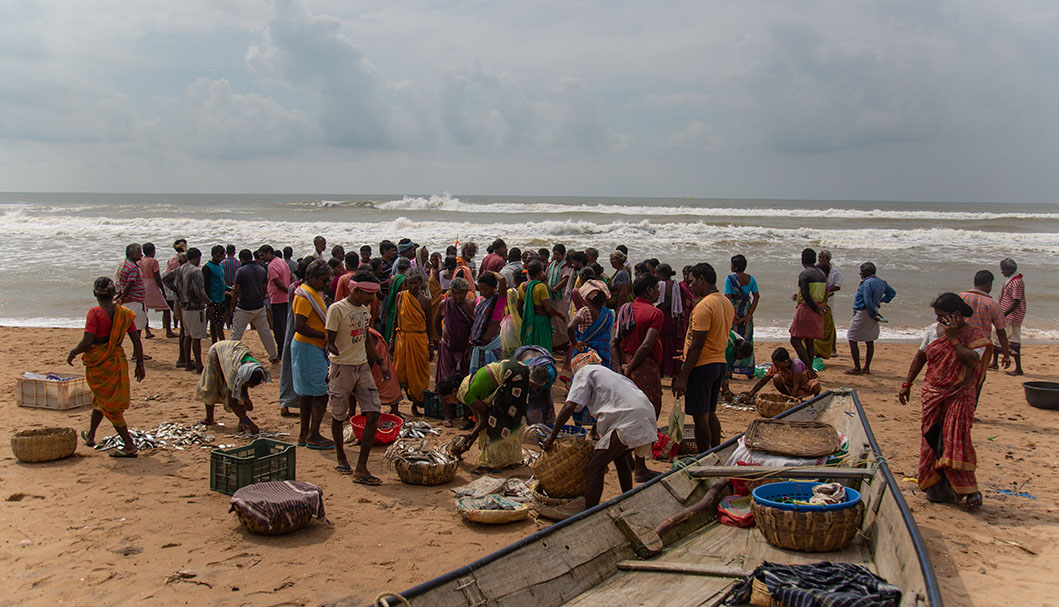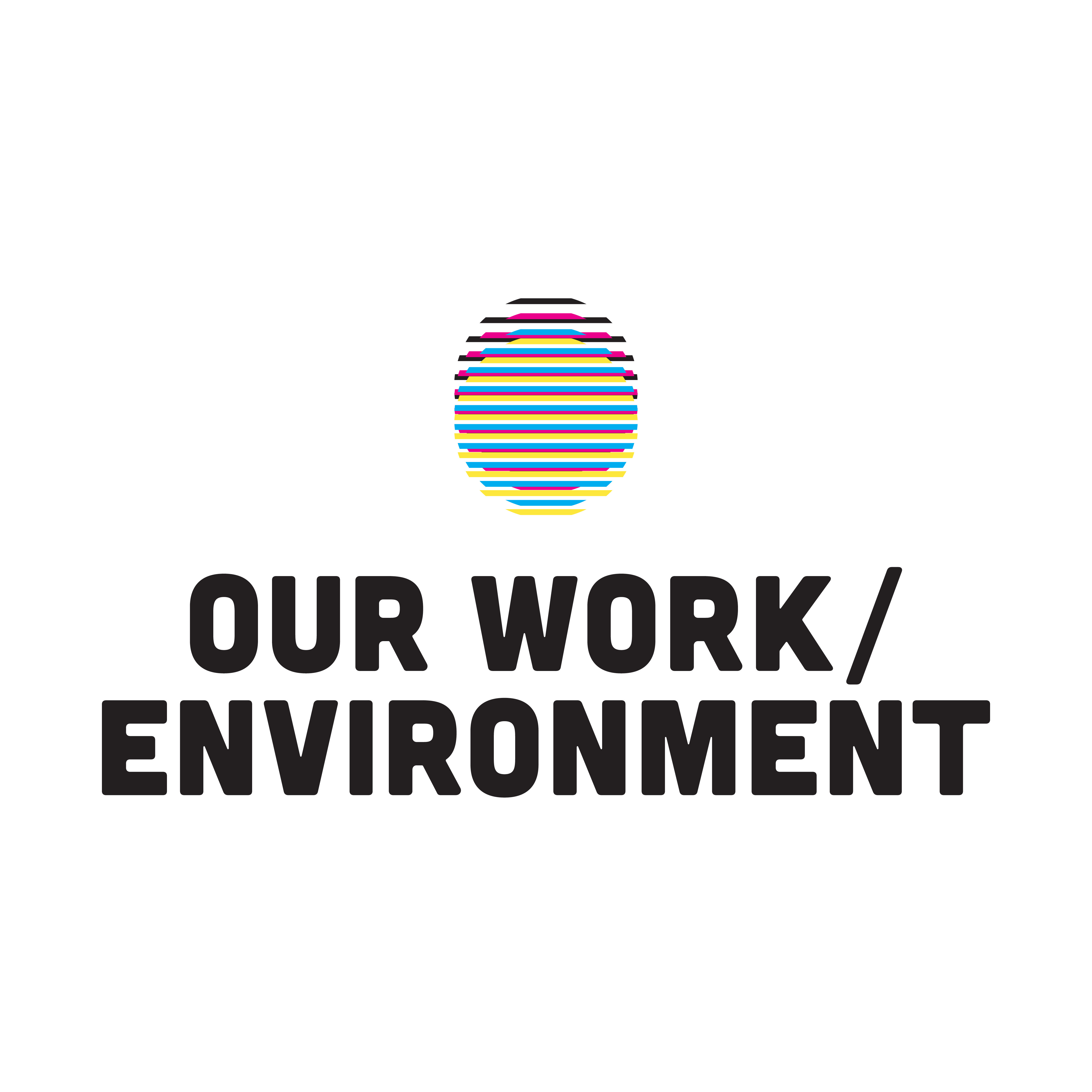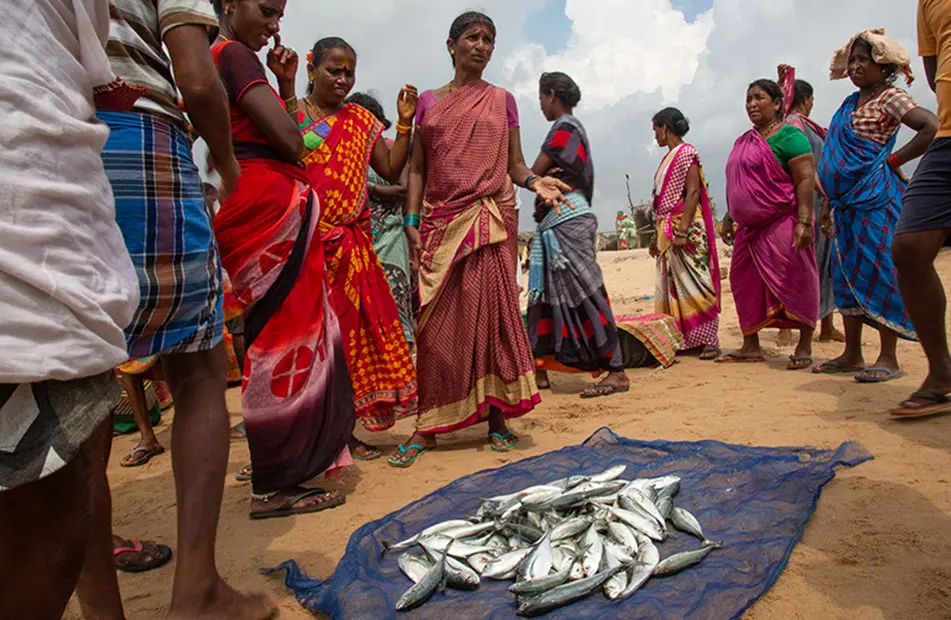
Extreme weather events are changing the way these communities live and work. But their lived experiences are being left out of climate talks.
On a sultry July morning, Rajamma woke up early for another day of hawking fish in Guppadipeta, a coastal village in Andhra Pradesh’s Srikakulam district. Her three children were still in various stages of drowsiness in the family’s cramped house. She put on a pink sari, slipped into a pair of turquoise flip-flops, grabbed swathes of old, tattered saris and two plastic baskets, and dashed off to the Guppadipeta beach, half a kilometre away.
The India Meteorological Department that week had predicted squalls, with winds gusting up to 60 kmph—not safe for fishers heading to sea. Regardless, half a dozen boats had dared to venture into the sea, desperate for a catch. Some of those fishers had already returned and were selling fish by the time Rajamma arrived. She joined other vendors, mostly women, who huddled around piles of Indian mackerel, seer fish, pomfret, snakeheads, crab and shrimp.

As a nonprofit journalism organization, we depend on your support to fund more than 170 reporting projects every year on critical global and local issues. Donate any amount today to become a Pulitzer Center Champion and receive exclusive benefits!
While most women either yelled at or pleaded with the fishers to haggle the price down, Rajamma, who is in her late forties, spoke sparingly. That day, she bought Rs 1,500 worth of fish on credit. In Guppadipeta, ice was hard to come by—and expensive when available—so Rajamma dabbed some sand and sprinkled seawater on the fish. “To keep it cold and fresh,” she said.
The fish would soon start rotting in the sultry weather. So she wrapped it in rags and started walking briskly, with a 20 kg load perched on her head.
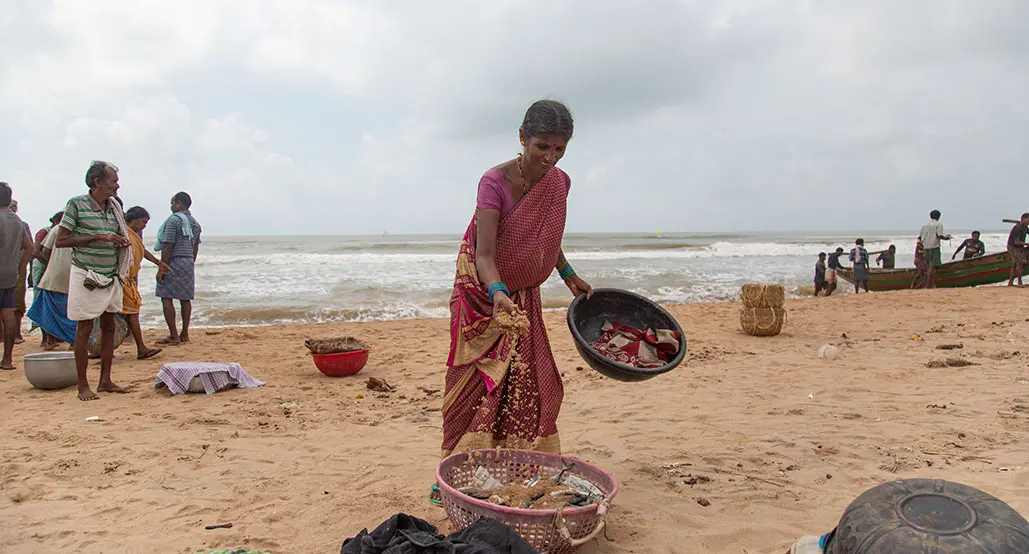
Rajamma is among more than 4.9 million Indians who work in marine fisheries along the country’s 7,516 km coastline from Gujarat to West Bengal, including the Andaman and Nicobar Islands and Lakshadweep. These include 2.7 million fishermen working on traditional boats, trawlers and deep-sea vessels, as well as 2.2 million women, who form the backbone of the country’s marine fisheries industry.
The industry is hailed as a “sunrise sector” in India, ranking second in global fish production (3.05 million tonnes). But climate change is fast becoming a threat for small-scale fishing workers like Rajamma.
Fishing communities are in the front line of climate change, said Venkatesh Salagrama, a Kakinada-based expert on small-scale fisheries, who is also an independent consultant to the UN’s Food and Agriculture Organization. “For every boat in the sea, there are at least 5-20 people depending on it,” he noted.
Increasing cyclones, erratic monsoon rains and rising temperatures affect how these communities live and work. Rising ocean temperatures lead to frequent cyclones, damaging houses and fishing gear, as well as reducing fishing days. They also result in coastal erosion, displacing fishing communities. Besides, they lead to weaker monsoons. Apart from this, ocean acidification causes irreversible damage to coral reefs and phytoplankton, which are crucial to the marine ecosystem. This, in turn, changes which—and how many—marine species fishers catch and vendors like Rajamma buy. Their problems are further compounded by overfishing, ocean pollution and poor coastal infrastructure.
Moreover, Rajamma is among 380 million Indian workers—both in fisheries and in other sectors—who work outdoors in the heat. Such heat-exposed labour contributes about 50% of India’s GDP. Declining labour productivity owing to heat could cost the country 2.5-3.5% of its GDP by 2030.
As world leaders are going to gather this weekend for the two-week UN climate summit at Sharm el-Sheikh in Egypt, questions about adaptation to the effects of climate change and compensation for the damage suffered by those affected are high on the agenda. But their lived experiences, including their losses and adaptation strategies—like migrating in search of work—remain ignored in climate conversations.
All in a day’s work
After buying fish, Rajamma stopped at home for a cup of milk tea and some boiled rice. Then she rushed to a nearby autorickshaw stand, shoved the two baskets into the vehicle’s trunk and squeezed herself among other women. Packed like sardines, the fish vendors set off for Narasannapeta, a town about 20 km away.
When she got there, Rajamma hailed another autorickshaw to go further inland to sell fish. Some fishmongers sell their wares to “adopted” villages, based on their understanding with the locals. Others peddle door to door and from village to village.
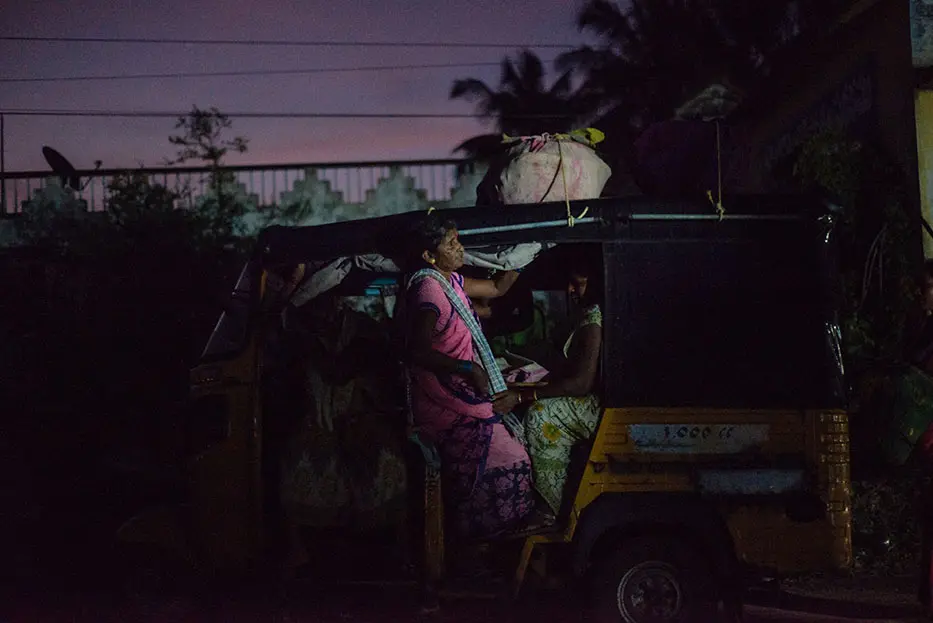
It was noon when Rajamma reached Karavanja, a village 30 km from Guppadipeta. The rest of the day, she walked the unshaded, mostly deserted streets, her sweat-soaked clothes clinging to her wiry frame. “Indian mackerel, Indian mackerel, Indian mackerel,” she called out in Telugu.
On days like these, she braves temperatures varying between 33 and 40 degrees Celsius, direct sunlight and humidity levels of over 70%—conditions considered unsafe for outdoor work.
To put things into context, India saw an average temperature increase of around 0.7 degrees Celsius between 1901 and 2018. Also, Andhra Pradesh is among the country’s six states that are likely to witness 64% of the total excess deaths—more than 1.5 million deaths each year in all—due to temperature rises owing to climate change by 2100.
In May, Rajamma went into a coma after suffering a stroke. She was walking in the hot afternoon sun when this happened, she said. Her treatment at a private hospital cost about Rs 40,000. The doctors advised her not to carry heavy items, but she ignored the advice.
“My head and face ache on most days. My legs also hurt,” she said. Many fishery workers in Guppadipeta also complained of heat-related conditions such as dehydration and kidney stones.
Erratic weather increases the women’s burden of work, notes Salagrama, the small-scale fisheries expert.
That’s not all. Women are hardly recognized for their role in fisheries, said Nitya Rao, a professor of gender and development at the University of East Anglia in Norwich, England. In fisheries, it’s often men who are visible because they go out to sea. As a result, women are often ignored when it comes to government policies, compensation plans and fishing technology development—all of which are centered around the “act” of fishing. “But what happens after the boat lands? The post-harvest work is all done by women,” said Rao. Post-harvest work involves cleaning, sorting, drying, smoking, selling and packaging fish.
Additionally, from occupational health hazards to the fisherfolk to the risk of spoilage of fish and food safety issues, there are plenty of ways in which an increase in land temperatures impacts the fishery supply chain, Rao pointed out.
That July evening, Rajamma managed to sell all the fish and earned Rs 300—after working 15 hours, walking 8-10 km and covering almost 60 km through public transportation. On days she couldn’t manage to sell all her wares, she would dry the unsold fish, she said.
Fish drying, an important source of income for women, has also become difficult due to erratic rains, erosion of beaches and loss of coastal commons (like beaches), some of which can be attributed to rising sea levels, according to Salagrama.
But climate change disrupts Rajamma’s life in more ways than one.
In fishing villages across Srikakulam district, when small-scale fishers can’t meet local demand, a parallel supply chain kicks in. Wholesale vendors, equipped with cold storage facilities in big cities like Visakhapatnam, bring trucks laden with fish and shrimp. Women like Rajamma, who doesn’t own a phone, learn of their arrival by word of mouth.
On one such day, Rajamma woke up at 2 am to reach the pop-up fish market. She scuttled under a fluorescent street lamp to buy fish. There was more ice than sand to preserve the fish. The market wrapped up by 5 am.
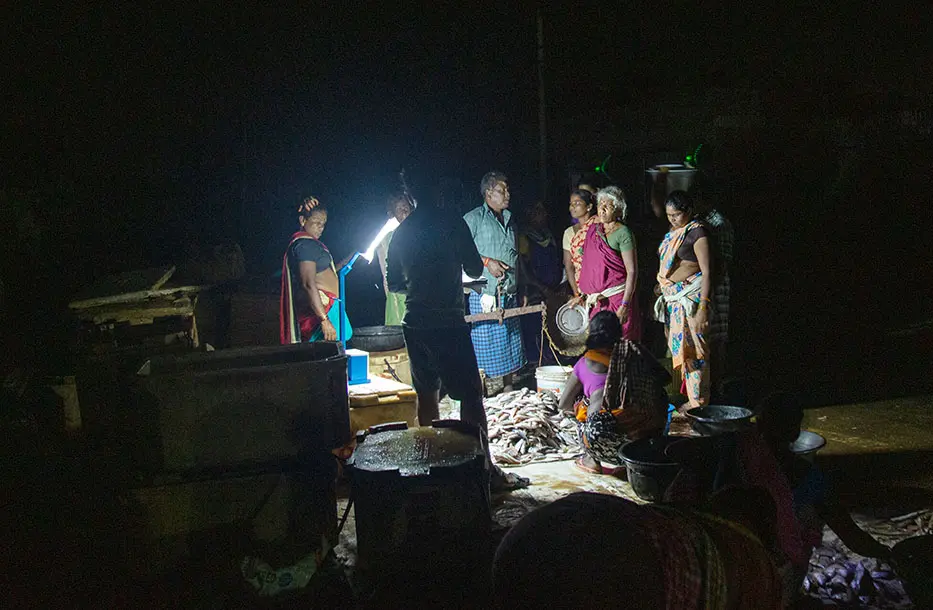
“She’s doing what her mother did, but in a totally different way,” said Salagrama. “She’s buying new varieties of fish in a new place, using new means, and selling them in a new market. These changes have happened so gradually that the women aren’t even aware that they have adapted to a warming world around them.”
While Rajamma has been struggling to cope with the impact of climate change on land, her husband, Dhanavelu, has been facing the vagaries of the sea for over three decades.
Sailing rough waters
When the shores of Srikakulam could no longer support his family, Dhanavelu started migrating to catch fish. For over a decade, the 56-year-old has been spending 10 months every year—August to May—away from his village of Guppadipeta, in a trawler docked at Mangaluru, Karnataka. In June, when the nationwide two-month fishing ban kicks in, he returns home. During this period, only small-scale fishers operating non-motorized boats are allowed to fish near the coast.
One morning in late July, a handful of such boats—80 in all—from Guppadipeta ventured into the sea, despite a squall and gust warning issued by the local meteorological department. As the sun rose above the horizon, I could see the silhouettes of the returning boats becoming sharper. One of those was Dhanavelu’s boat, a wood-and-fibre craft with no mast, all five crew members soaking wet. A few hundred metres away from the shore, a giant wave capsized the boat. The crew managed to turn it over. The catch was safe, still fastened to the vessel.
“The sea here is very rough. Every day someone gets hurt while fishing,” said Dhanavelu, who has a long, wrinkled face with greying eyebrows. “It’s so hard to work here. There’s barely any fish even after 10-12 hours of work.” That day, Dhanavelu earned just about Rs 400.
Several other fishermen I spoke to said they wouldn’t be able to bear the constant body aches that their work entailed if it weren’t for alcohol.
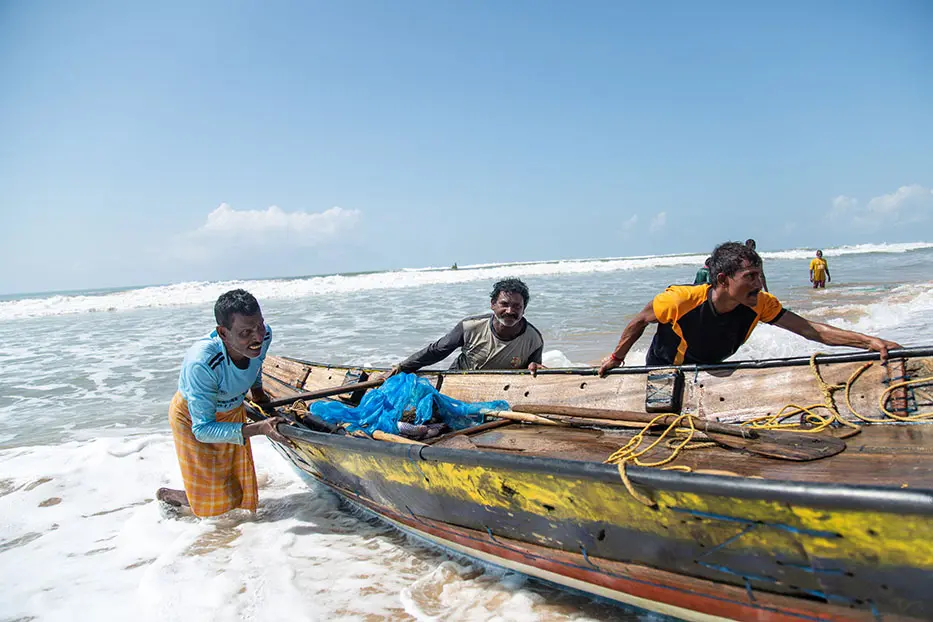
Small-scale fishers, working on both motorized and non-motorized boats, make up about 70% of India’s marine fisheries workforce. Yet, they account for less than 20% of the catch.
For fishers, then, there’s no escaping the fact that climate change is an unavoidable part of their lives—whether they realize it or not.
On the ground, the way the fishing communities engage with climate change could influence their day-to-day experiences and choices. But they may or may not connect them with climate change, according to Naveen Namboothri, an ecologist and a founder trustee of Dakshin Foundation, an NGO working on coastal and marine ecosystems and communities. Adapting to climate change, Namboothri said, could mean changing the type of net and craft the fishers use, or learning to manage different winds and currents.
When it comes to adapting to climate change, cyclones are of particular concern.
While squalls, gusts and depressions affect fishing activities in the pre- and post-monsoon fishing season, rising sea surface temperatures are making cyclones more intense, explained Roxy Mathew Koll, a climate scientist at the Pune-based Indian Institute of Tropical Meteorology.
In the Bay Bengal and the Arabian Sea, for instance, average temperatures generally remain below 28-29 degrees Celsius and 27 degrees Celsius respectively. But in recent years, sea surface temperatures have risen, along with instances of marine heat waves touching 30-32 degrees Celsius. The Bay of Bengal alone saw 94 marine heat waves between 1982 and 2018.
“We have never recorded these temperatures in the tropics. Water has the capacity to retain more heat, and for a longer time,” said Koll.
Like most districts on India’s eastern coast, Srikakulam is also “highly prone to cyclones,” according to the IMD’s Climate Hazard and Vulnerability Atlas. In October 2018, it was hit by Cyclone Titli, which damaged 884 boats and 2,000 nets, including those in the villages of Srikakulam. People lost nearly 24 days of work before and after the cyclone, a study showed.
In 2020, Cyclone Amphan, which battered West Bengal and Bangladesh, turned into a compound extreme event due to marine heat waves. It was “the costliest cyclone in the North Indian Ocean”, inflicting losses of around $14 billion and claiming 120 lives.
Despite the adverse impact of climate change on the lives and livelihoods of the fishing communities, their issues haven’t got the attention they deserve.
A crisis ignored
Last year, 40-year-old Simhachalan, from Guppadipeta, earned around Rs 40,000 between May and June through fishing, but he could hardly make any money until October. The reason: The weather was unfavourable and the IMD had warned against fishing during that period.
“It was the maximum number of days in my life that I didn’t go fishing,” recalled Simhachalan. But he didn’t receive any compensation for the loss of income he suffered.
Such uncompensated loss in terms of fishing days is becoming a major concern, said Shyam S. Salim, principal scientist at the Central Marine Fisheries Research Institute, Kochi.
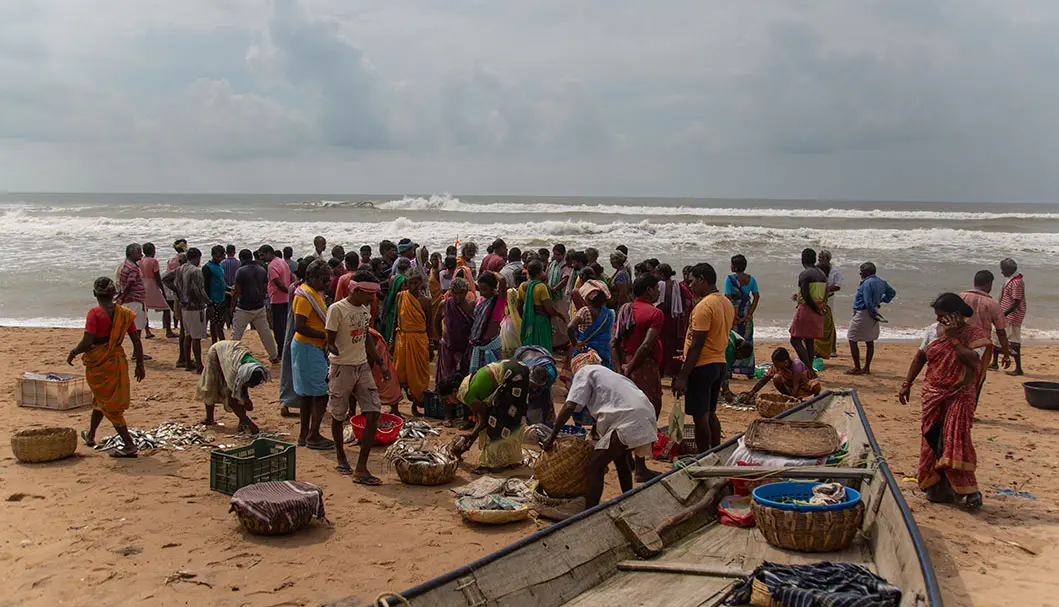
“Climate change is the final nail in the coffin for [small-scale] fishers,” said Salagrama, the small-scale fisheries expert quoted earlier. “The changes brought on by climate change are not just spectacular, indicator events like cyclones. It also affects every part of [fishing workers’] life and livelihoods, and that’s harder to document.”
However, a few studies have examined the cascading effects of climate change on the fishing communities. For instance, after Cyclone Ockhi hit Kerala and Tamil Nadu in 2016, a study found that there was an increase in cyclone alerts and extreme weather conditions the following year, which reduced fishing days by 40-50% in the affected areas, causing losses worth $17.02 million. In 2019, fishermen in Maharashtra also faced losses for similar reasons. But post-disaster compensation seldom covers such losses.
Which is why most fishers adapt or migrate—just like the fish they catch.
In this context, a project conducted by the Central Marine Fisheries Research Institute found that adapting to the impact of climate change requires interventions such as improving warning systems, developing alternative livelihood options, creating awareness and identifying local change agents.
Salim, a principal scientist at the institute, noted that there’s a need for localized and decentralized climate action mapping as well as specific adaptation and mitigation plans. Such plans should involve local communities, he added. The Indian government, along with the institute, aims to map climate hazards for villages in 66 coastal districts across India. But there’s little on the ground to suggest that things are changing.
In 2020, the Central Marine Fisheries Research Institute studied 68 of the 240 fish species that contribute to marine fisheries in India. Around 69% of them were found to be vulnerable to the changing climate. Other studies show that when temperatures rise, many species plummet or migrate to cooler waters, thus affecting local catch.
Namboothri, however, pointed out that it’s not only climate change that affects Indian fishers. The community is being squeezed as a result of dilution of coastal regulation norms, port development projects, overfishing, ocean pollution and lack of infrastructure development to support small-scale fishers.
As a result, many fishers have had to migrate.
The cost of migration
It was hard to track down G.V. Raman in the dockyards of Veraval, a harbour in Gujarat that accounts for a quarter of the state’s marine fish catch. It was muggy and there was no shade, just an endless fleet of fishing vessels anchored close together as far as the eye could see. When his name was called out, the message was relayed from one boat to another until it reached Raman. He leaped from one boat to another, beads of sweat rolling down his rugged and sunburnt face—until he landed in front of me.
More than a decade ago, Raman, in his fifties, left Srikakulam and moved to Veraval, where, he said, “thousands” from Andhra Pradesh worked as fishermen. Raman still doesn’t have a permanent address here. None of the migrant fishers do. They all eat and sleep in trawlers, which are equipped with large storage units, GPS and radio systems. Holidays, regular baths and mattresses are luxuries.
Raman, who started out as a labourer, rose through the ranks to become a tandel, or a boat’s driver.
Unlike the uncrowded sandy beaches of Srikakulam’s Guppadipeta, Veraval’s coast was chock-a-block with fishing trawlers. While the harbour is meant to accommodate 2,000 trawlers, locals said Veraval has 4,500-5,000.
In August, when I met Raman, the fishing season had resumed just a week earlier. “But not many boats have gone out in the sea,” he said. The IMD had issued an alert for that week, prohibiting fishing owing to an impending cyclone in the Arabian Sea.
Fishing is a capital-intensive activity. Boat owners, who are also fishers, spend up to Rs 4-5 lakh on a two-to-three week trip, said Chaganbhai Dari, a trawler owner in Veraval. This includes fuel expenses, buying nets, fishlines and ice for cold storage facilities as well as providing ration and salaries for crew members.
One of Dari’s boats left as soon as the nationwide two-month fishing ban was lifted. The boat had spent barely a week at sea when the IMD issued the cyclone warning. “We can’t find any catch in such a short time span. We need at least 10-15 days,” he said. His boat returned without any fish.
If this happens frequently, it is hard for fishermen to recuperate their losses. This, combined with rising operational costs, has pushed many of them into debt.
“I lost so much of my investment in the last few years that I had to mortgage my house,” said Dari, forcing a smile. “I look like I’m well off, but I really am not.”
Many fishers in Veraval said they had downsized their fleet. Some were no longer hiring migrant workers.
Back in Srikakulam, most men aspire to leave their villages or fisheries—or both. In some Srikakulam villages, such as D Matchelesam and S Matchelesam, over 90% of men have left. Most of those who left ended up working in fishing hubs like Veraval.
But Dhanavelu, who migrates to the coast of Mangaluru every year, doesn’t want the same for his children. He and Rajamma ensured that their two sons and a daughter had an education. The eldest, in his mid-twenties, trained to work in the merchant navy, a much sought-after profession among the fishing communities. However, he hasn’t had any luck in finding a job. Desperate to get their son a job, Rajamma and Dhanavelu paid Rs 1 lakh to a middleman, only to find out later that they had been duped.
“It would be hard if my son doesn’t work,” Rajamma said. “But we don’t want him to go fishing. He should get a job.”
Fishing, in Dhanavelu’s view, was not a job.
This is the first installment in a series on climate change, livelihood and migration in India.


